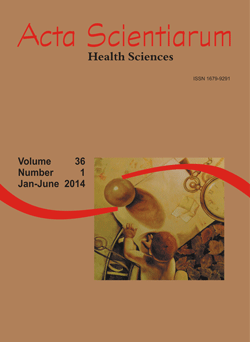<b>Reference intervals for hematological parameters of animals bred and kept at the vivarium of the Faculty of Medicine of the State University of São Paulo</b>
Abstract
Knowledge of specific hematological parameters of laboratory animals used in experiments is
highly relevant to evaluate functional alterations of their vital organs. Hematological reference rates for rats, mice,
rabbits and hamsters, bred in conventional healthy conditions and derived from the Vivarium of the FMUSP’s
Vivarium Center are established. One hundred and twenty mice of the strains BALB/c, C57BL / 6 and Swiss, 80
Wistar rats, 80 Golden hamsters and 80 New Zealand rabbits, males and females, apparently normal and healthy,
over 10-weeks-old, were employed in current experiment. The analysis was determined by flow cytometry
process (CELM CC510) involving the separation of erythrocytes and leukocytes, and cell identification by the
suspension method and quantification. Hematological derivatives such as hematometric indexes (application of
equations) and morphological quantification of leukocytes and erythrocytes were determined by
scanning/differential (Panótico-commercial), whereas hemoglobin dosage was determined by spectrophotometry
(CELM E210D). Results are given as means and standard deviants of hematological profiles in the blood of the
animals grouped by species, strain and sex. Data are an important asset for researchers in their analysis of
experimental results. CEAU Certificate n.° 251/11 HCFMUSP.
Downloads
DECLARATION OF ORIGINALITY AND COPYRIGHTS
I Declare that current article is original and has not been submitted for publication, in part or in whole, to any other national or international journal.
The copyrights belong exclusively to the authors. Published content is licensed under Creative Commons Attribution 4.0 (CC BY 4.0) guidelines, which allows sharing (copy and distribution of the material in any medium or format) and adaptation (remix, transform, and build upon the material) for any purpose, even commercially, under the terms of attribution.
Read this link for further information on how to use CC BY 4.0 properly.























5.png)







